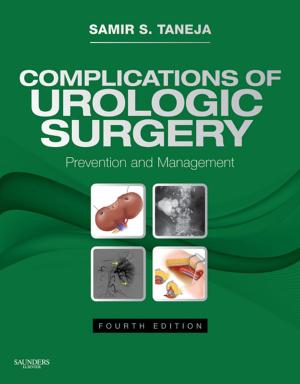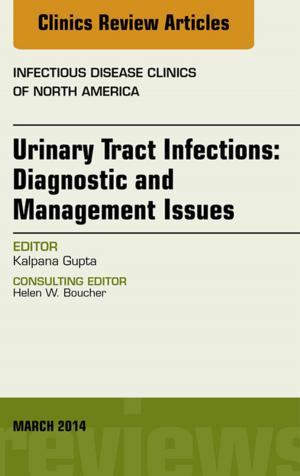Recurrent First Trimester Pregnancy Loss, An Issue of Obstetrics and Gynecology Clinics, E-Book
Nonfiction, Health & Well Being, Medical, Nursing, Maternity, Prenatal, & Women&, Specialties, Gynecology & Obstetrics| Author: | William H. Kutteh, MD | ISBN: | 9780323290258 |
| Publisher: | Elsevier Health Sciences | Publication: | February 18, 2014 |
| Imprint: | Elsevier | Language: | English |
| Author: | William H. Kutteh, MD |
| ISBN: | 9780323290258 |
| Publisher: | Elsevier Health Sciences |
| Publication: | February 18, 2014 |
| Imprint: | Elsevier |
| Language: | English |
This issue of the Obstetrics and Gynecology Clinics in North America will focus on the advances in the evaluation and management of Recurrent Pregnancy Loss (RPL) that have emerged within the last few years. Although spontaneous pregnancy loss occurs in approximately 15% to 20% of clinically recognized pregnancies in reproductive-aged women, RPL occurs in 2% to 5% of the same population. Recent reports on large populations of women with RPL have helped to characterize the incidence and diversity of this heterogeneous disorder, and a definite cause of pregnancy loss can be established on over 50% of all couples after a thorough evaluation. New diagnostic strategies, which include 23-chromosome microarray genetic testing of the products of conception in failed pregnancies, offer the promise of understanding the cause of most pregnancy losses. These recent advances, combined with the contributions from the authors in this issue of Clinics and many others interested in this field, lead to the publication of the long-awaited publication on evaluation and treatment of RPL from the Practice Committee of the American Society for Reproductive Medicine. A complete evaluation will include investigations into genetic, anatomic, immunologic, endocrinologic, and iatrogenic factors.
This issue of the Obstetrics and Gynecology Clinics in North America will focus on the advances in the evaluation and management of Recurrent Pregnancy Loss (RPL) that have emerged within the last few years. Although spontaneous pregnancy loss occurs in approximately 15% to 20% of clinically recognized pregnancies in reproductive-aged women, RPL occurs in 2% to 5% of the same population. Recent reports on large populations of women with RPL have helped to characterize the incidence and diversity of this heterogeneous disorder, and a definite cause of pregnancy loss can be established on over 50% of all couples after a thorough evaluation. New diagnostic strategies, which include 23-chromosome microarray genetic testing of the products of conception in failed pregnancies, offer the promise of understanding the cause of most pregnancy losses. These recent advances, combined with the contributions from the authors in this issue of Clinics and many others interested in this field, lead to the publication of the long-awaited publication on evaluation and treatment of RPL from the Practice Committee of the American Society for Reproductive Medicine. A complete evaluation will include investigations into genetic, anatomic, immunologic, endocrinologic, and iatrogenic factors.















